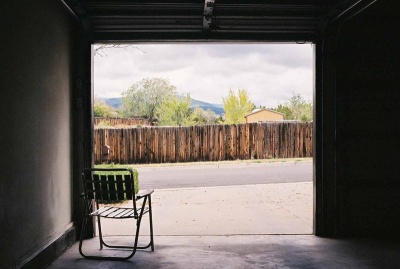Now, that we know how to pack our belongings, we can go over the various details involved in the process of a do-it-yourself move.
 Moving Day by Richard O.Barry
Moving Day by Richard O.Barry
How to Handle Stress
Some people get overwhelmingly stressed during a move. Others seem to handle it with grace and a smile. But it’s not all personality and disposition—if you want to experience a stress-free move, follow these simple steps:
- Take Advantage of Moving Supplies
When having to move thousands of items, it is not such a bad idea to invest in few inexpensive moving supplies that can help manage your move more easily. As soon as you know you will be moving, start collecting clean boxes, unprinted newsprints (newsprint ink stains!), stack up on bubble wrap or buy heavy-duty cartons.
- Pack Ahead of Time
A do-it-yourself move requires a lot of your time. Packing the night before the move is definitely not a good idea. You should always have your belongings packed the day prior to moving day to ensure you have the last day to pack up all the items you forgot about. The sooner you start, the better—pack things like CDs/DVDs and out-of-season clothes ahead of time since you won’t need them until you get to your new home. The more you pack ahead of time, the less you’ll have to worry about.
- Purge
Moving is a great way to get rid of old, unnecessary things you always kept because you thought you might need them later. When packing, go through all your belongings and select things you don’t need or haven’t used for over six months (or another chosen timeframe)—for example, those magazines you’ve been keeping for three years. You can either throw these items away. Better yet—simply donate them.
- Lists, Lists, Lists
This may be the most important task when preparing for a move. Make a list for everything—a list of things you need to buy; a list of items that you don’t need, or want to donate before the move; a list of expensive items that need to be handled with care at all times; a list of every object you’re moving. On moving day, those lists will prove to be a powerful stress reliever.
Preparing for “M-Day”
Don’t hesitate to ask family members, friends or colleagues to help you with loading and unloading. You’ll be very surprised how much faster the process goes with a few extra hands. When moving day arrives, organize a party and offer sandwiches or pizza and drinks to anyone who decides to help out. This way, people will be enjoying the day in a relaxed way and the work will get done quickly and pain-free.
Another concern (if it applies) should be your children. On moving day, find a babysitter, neighbour or a family member that can take them during the day (unless they’re old enough to be put to work—give them simple “project-management-like” tasks). It’s not fun seeing their rooms being packed; let them keep a few of their toys to play with during the move.
The same goes for your pet(s)—try to find someone who can be the pet caretaker on moving day. Remember to pack your pet’s belongings separately so it can be unpacked right away at your new home. When transporting pets, take precautions to avoid the animal from getting sick in the car. Never leave your pet alone in the car during the move; if you have to stop along the way, leash/crate your pet.
Finding a Good Moving Truck Rental
It’s quite likely your car won’t be large enough to transport all your belongings to your new home, so you’ll need to do some homework on rental trucks. The experience you have with the moving truck rental company is largely dependent on you. Here are a few things to keep in mind:
- The first step when choosing a rental truck is to determine the size you’ll need. Remember, your truck should be large enough to accommodate 10-15% more than what you own, just to make sure you’re going to have enough room. More room is better than getting stuck with not enough.
- With so many rental companies in business these days, you’d think they would all charge about the same. Unfortunately, they don’t. Look online for the best rates, make a few phone calls and compare prices from different companies.
- Renting a moving truck is very similar to renting a car. Reserve your truck ahead of time so you don’t get stuck with one that doesn’t suit your needs. That way, you’ll be certain it will be ready for you the day you need it.
- Consider getting insurance on your rented truck. Driving a large vehicle is quite different from what you’re used to. Without insurance, one mistake can cost you a fortune. A few extra minutes researching insurance (with your auto insurance company’s help) and few more dollars will ensure a headache-free move.
- Try to look ahead and figure out how long you think you’ll need your rental truck, with some time to spare. The reason for doing this is that you don’t want to return it late. The fees for doing so can be extremely high.
Moving a Car
If you own more than one car, decide ahead of time how to transport it to your new destination. You can drive it, ship it, tow it or put it on a trailer. Another choice worth considering is selling it, storing it or giving it to a relative. Before you decide to tow your vehicle, read the car manual to prevent any unnecessary accidents, and make sure your primary vehicle is capable of towing a secondary vehicle with ease. Boats, trailers, motorcycles, four-wheelers, and so forth may need special equipment to be towed. If you’re uncertain on how to proceed with towing them, look online or contact the dealer you purchased it from.
